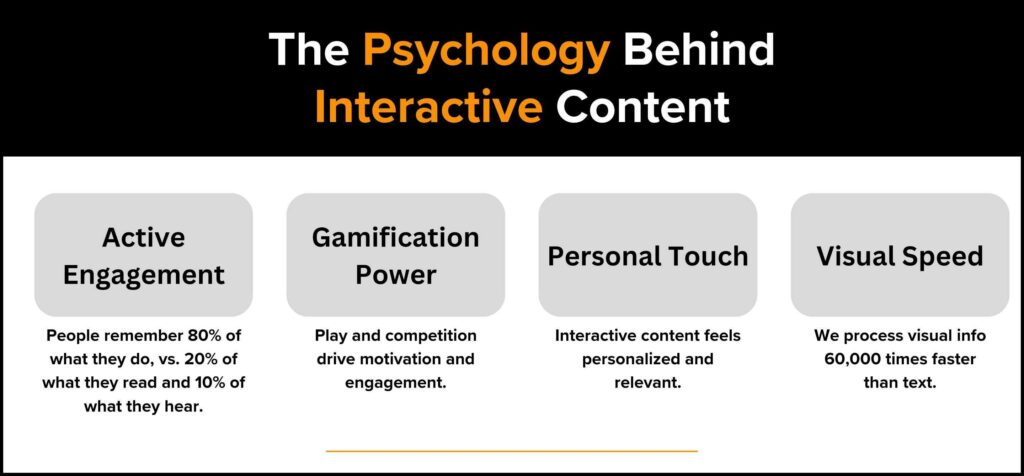In the fast-evolving world of digital marketing, businesses are constantly seeking new ways to cut through the noise and grab the attention of their target audience. Traditional content marketing strategies often focus on generating a high volume of content, but the real challenge is creating content that delivers measurable results, particularly conversions. Enter the conversion-first approach to content marketing, a strategy that places conversions at the heart of content creation and optimization. Let’s dive into what this approach entails and how it can drive real results for your business.
What is Smart Content?
Smart content is not your average, one-size-fits-all digital content. It’s a strategic approach to creating and delivering personalized, dynamic content that speaks directly to the needs, preferences, and behaviors of individual users or specific audience segments. Unlike traditional, static content that is pushed out to a broad, undifferentiated audience, smart content uses data and advanced technologies to adapt and respond to each visitor’s unique situation. By making content more relevant and timely, smart content ensures that your marketing efforts resonate deeply with your audience, fostering engagement, trust, and ultimately conversions.
The Core of Smart Content
The core elements of smart content are personalization, relevance, and optimization. Each piece of content is carefully crafted and tailored to provide value to the user, based on specific factors such as their past interactions with your brand, their demographic information, or their current position in the buyer’s journey. Smart content uses automation, analytics, and machine learning to continuously adapt, optimize, and personalize content at scale.
Why a Conversion-First Approach?
The conventional approach to content marketing often focuses on vanity metrics page views, social shares, and likes. While these metrics can be useful for measuring brand awareness, they don’t necessarily reflect business growth or profitability. In a conversion-first approach, your primary focus is on how content drives the key actions that contribute to your bottom line.
Key Benefits of a Conversion-First Content Strategy
- Higher ROI: By focusing on conversions, your content strategy becomes more cost-effective. Every piece of content you create has a clear goal whether it’s to generate leads, increase sales, or retain customers. This targeted approach ensures that you’re getting the most out of your marketing budget.
- Better Audience Engagement: Conversion-first content is all about personalization and relevance. By providing content that directly speaks to your audience’s needs and interests, you’re more likely to engage them meaningfully, fostering stronger relationships and encouraging repeat interactions.
- Measurable Success: Unlike vanity metrics, conversions are easily measurable. Whether you’re tracking sign-ups, purchases, or form submissions, you’ll be able to directly tie the performance of your content to tangible outcomes. This makes it easier to optimize your content for even better results.
- Optimized Customer Journey: A conversion-first approach takes the entire customer journey into account. From awareness to consideration to decision-making, your content is strategically crafted to meet customers where they are and move them closer to conversion.

How to Implement a Conversion-First Content Strategy
- Know Your Audience: The first step in creating smart, conversion-focused content is understanding who your audience is. Use data-driven insights from customer behaviors, preferences, and feedback to build detailed buyer personas. The more you know about your target audience, the better equipped you’ll be to create content that speaks to their needs and pain points.
- Set Clear Conversion Goals: Every piece of content should have a clear, measurable goal. Whether it’s driving traffic to a landing page, collecting email addresses, or generating sales, define your conversion goals from the outset. This will help guide the content creation process and allow you to measure its success accurately.
- Create Compelling Calls to Action (CTAs): Your content should always include a clear and compelling call to action. A strong CTA tells your audience exactly what to do next and guides them toward taking the desired action. Whether it’s “Download the eBook,” “Start Your Free Trial,” or “Shop Now,” make sure your CTA aligns with your conversion goals.
- Use Data to Optimize Content: Data is a powerful tool for continuously optimizing your content strategy. Analyze the performance of your content to see which types are generating the most conversions. Use A/B testing, heat maps, and analytics tools to refine your content and CTAs for maximum impact.
- Leverage Content Personalization: Personalized content is more likely to resonate with your audience and lead to conversions. Use dynamic content, behavioral triggers, and customer segments to personalize your messaging. Whether it’s through tailored email campaigns or targeted landing pages, personalization helps create a more engaging user experience.
Examples of Conversion-First Content
- Lead Magnets: Offer valuable content, such as eBooks, webinars, or whitepapers, in exchange for contact information. This content serves as a lead magnet, drawing in potential customers and nurturing them through the sales funnel.
- Case Studies and Testimonials: Showcase real-world examples of how your product or service has helped customers achieve their goals. Case studies and testimonials build trust and credibility, encouraging potential customers to take the next step toward conversion.
- Optimized Landing Pages: A well-designed landing page is a key component of a conversion-first content strategy. By focusing on a single goal whether it’s capturing leads or generating sales you can eliminate distractions and guide visitors toward completing the desired action.
- Interactive Content: Interactive content, such as quizzes, calculators, and surveys, can help drive conversions by providing personalized recommendations or insights. Interactive content engages users in a more immersive way, increasing the likelihood of conversion.
Conversion Tracking and Metrics
To truly understand the effectiveness of your conversion-first content strategy, you need to track the right metrics. Focus on metrics that directly align with your goals, such as:
- Conversion Rate: The percentage of visitors who complete a desired action.
- Lead Generation: The number of leads collected through forms, downloads, or sign-ups.
- Customer Acquisition Cost (CAC): The cost of acquiring each new customer through your content.
- Customer Lifetime Value (LTV): The total revenue a customer generates over their lifetime with your business.
- Return on Investment (ROI): The overall profitability of your content marketing efforts.

The Role of SEO in Conversion-First Content Strategy
SEO is a critical component of a conversion-first content strategy. To generate more qualified traffic, it’s essential to optimize your content for search engines. However, merely driving traffic is not enough; it’s important that the visitors you attract are already interested in your product or service.
How SEO Fits Into Conversion-First Content:
- Keyword Targeting: Use highly relevant keywords in your content to ensure it ranks for search queries that have a high potential for conversions. Focus on long-tail keywords that indicate buyer intent.
- On-Page Optimization: Ensure that your content is well-optimized for search engines, including title tags, meta descriptions, and internal linking, while making sure that it’s still valuable and engaging for users.
- Local SEO: If you have a physical location or serve a specific geographic area, optimize your content for local searches to attract customers who are likely to convert.
Example: If you’re a business offering personalized fitness equipment, you could create content optimized for terms like “best home gym equipment for small spaces” or “personalized fitness gear,” making it easier for people who are ready to buy to find your site and convert.
The Importance of Storytelling in Driving Conversions
Storytelling is a powerful tool in content marketing. When used effectively, it can humanize your brand, build trust, and engage your audience on a deeper emotional level helping you convert more visitors into loyal customers.
Why Storytelling Matters in a Conversion-First Strategy:
- Emotional Engagement: People remember stories far better than they remember statistics or features. When your content tells a compelling story, it creates an emotional connection that can inspire action.
- Brand Differentiation: Storytelling helps set your brand apart in a crowded marketplace. It provides an opportunity to highlight what makes your product or service unique.
- Building Trust: Sharing real customer stories or case studies showcases the positive experiences others have had with your product, helping potential customers feel more confident in making a purchase.
Example: A clothing brand could create a video series featuring real customers sharing their stories of how the brand’s clothing made them feel more confident and empowered. This type of content is not only engaging but can also increase conversion rates.
User Experience (UX) and Conversion Optimization
Even if your content is engaging and optimized, it can fall short if the user experience (UX) isn’t top-notch. The goal is to provide a seamless experience that encourages visitors to take the next step in their journey without frustration.
Key UX Elements to Consider:
- Fast Loading Times: Slow website load times can drive visitors away before they even have a chance to engage with your content. Ensure your site is optimized for speed to retain potential customers.
- Mobile Optimization: With an increasing number of users accessing websites via mobile devices, your content and site need to be mobile-friendly. This includes responsive design, easy navigation, and fast loading on mobile.
- Clear Navigation: Ensure your website is easy to navigate. Users should be able to find what they’re looking for quickly without getting lost in a maze of links and pages.
Example: A study showed that a retail website with a fast-loading, mobile-optimized design saw a 40% increase in conversions compared to one with poor mobile performance.

How to Create a Conversion-Focused Content Calendar
A content calendar helps you stay organized and ensures that you’re consistently producing content that aligns with your business goals. However, to make sure that the content you create is aligned with conversions, your calendar should be planned with strategic intent.
Steps for Building a Conversion-Focused Content Calendar:
- Define Your Conversion Goals: Whether it’s lead generation, direct sales, or increasing newsletter sign-ups, make sure each piece of content has a clear conversion goal.
- Align Content Topics with Customer Pain Points: Craft content around the issues and questions your audience is actively searching for. Addressing their concerns will make them more likely to engage and convert.
- Schedule Regular Content Reviews: Periodically review your content’s performance to understand what’s working and what’s not. This will help you refine your calendar for maximum conversions.
- Incorporate Conversion Tactics in Every Piece: Ensure that each piece of content features a well-placed CTA, such as “Start a Free Trial,” or “Download Your Guide,” to move the user further down the funnel.
Example: A software company might schedule blog posts around common industry pain points and complement them with downloadable whitepapers or demo offers to turn readers into leads.
Social Proof and Its Impact on Conversion Rates
In the digital age, social proof such as reviews, ratings, and user testimonials plays a significant role in shaping consumer behavior. The concept of social proof is based on the idea that people are more likely to take action when they see others have done the same and had a positive experience.
Types of Social Proof to Include in Conversion-First Content:
- Customer Reviews and Testimonials: Featuring real customer feedback on your website or product pages can help new customers feel more confident in their purchasing decisions.
- User-Generated Content (UGC): Encourage customers to share photos, videos, or stories about their experiences with your product. This adds authenticity and increases trust.
- Case Studies and Success Stories: Showcase detailed examples of how your product or service has helped real customers achieve their goals. These stories can act as powerful trust signals.
Example: An online software company might feature case studies and testimonials from clients in similar industries to demonstrate how their product improves business efficiency. This kind of content can increase trust and lead to higher conversion rates.

Embrace the Power of Conversion-First Content
By adopting a conversion-first approach to content, you’re aligning your efforts with business outcomes rather than just creating content for content’s sake. Through personalization, data-driven decisions, compelling storytelling, and optimized user experiences, your content becomes a powerful tool in driving meaningful conversions. It’s time to shift your focus toward creating smart content that not only engages your audience but also leads them to take action. By tracking the right metrics and continuously optimizing, your content marketing can evolve into a conversion-generating powerhouse.



Recent Comments